College Park loves a parade
Many local and state races will be decided on the July 19 primary. Read the College Park election preview on P.3
Rundown of state money coming to College Park. P.4


Many local and state races will be decided on the July 19 primary. Read the College Park election preview on P.3
Rundown of state money coming to College Park. P.4

 By Jon Meltzer
By Jon Meltzer
Residents of College Park’s northern neighborhoods will see several new large-scale building projects in the coming years.
While family-owned real estate development firm RST Development, LLC, which is headquartered in Rockville, plans a new apartment complex on Route 1, the Prince George’s County Department of Parks and Recreation is simultaneously in the planning stages of a new community center.


Claire Worshtil, lead strategic park planner with the county’s parks department, said that


The University of Maryland baseball team logged one of its finest seasons ever in 2022. To say the year was memorable is an understatement. It was record-setting. Historic. The Terrapins won a school-record 48 games, going 48-14 for a .774 winning percentage. They captured the Big 10 championship for their first conference title since winning the ACC in 1971.
Maryland’s performance so impressed the NCAA that it was selected to host a postseason regional tournament for the first time. The Terps finished one victory shy of advancing
SEE BASEBALL ON 9
Although the first streetcar lines in the District were in service during the Civil War, they were horse-drawn cars that traveled only slightly faster than one could walk, and their range was limited. These cars operated primarily in what was then known as the L’Enfant City (a substantial portion of the District, generally south of Florida Avenue) and in Georgetown. While steam locomotives were too cumbersome and noisy to run on city streets, steam did power elements of the District’s largest streetcar company, the Washington & Georgetown. This company, one of a halfdozen in the city, replaced horse power in 1890 with underground cables that were kept in constant motion by steam engines housed in two big power stations. San Francisco’s famous cable cars used this same technology. Underground cables could handle the challenges of steeper hills and eliminated the costs of caring for horses, but they were too expensive to install and maintain to be practical for longer lines, and smaller companies could not shoulder the expense. With the intro-
duction of the first successful electric streetcar, in 1888, in Richmond, the economics of streetcar operation changed. A national boom in construction of new lines soon followed, with many of these new lines running far beyond the more developed portions of cities. The resulting ease of access ushered in the country’s first era of suburban sprawl.
The Here & Now recently received a letter from a resident in response to our May reporting on the stormwater drainage project slated for the Calvert Hills neighborhood. The resident wrote that our reporting understated the surface area of the park where containment vaults will be installed. He also stated that county planners are studying the feasibility of seismic monitoring of foundations near the construction zone, but that such monitoring is not included in the current plan.
Managing Editor Mark Goodson mark@hyattsvillelife.com
The Columbia and Maryland Railway, chartered in 1892, was one of many highly speculative suburban lines proposed during the first decade of electric streetcars. The railway’s founders wanted to build an electric streetcar line between Washington and Baltimore, which they imagined would form the core of what they saw as a “great country city,” an expansive development linking the two municipalities.
In the late 1800s, a streetcar line ran from near the White House along New York Avenue and then north through Eckington. In 1897, the line was extended to a turn-around loop in Mount Rainier; Rhode Island Avenue now parallels this route, and the old terminal loop is currently used by buses. The main
Advertising Sales Manager
Miranda Goodson
portion of the line, which was renamed the City and Suburban in 1898, was extended to Branchville Road in 1900, with a turnaround loop roughly where Greenbelt Road crosses Rhode Island Avenue today. Then, in 1902, a single-track extension opened and offered hourly shuttle service from Branchville Road to a station in Laurel.
Also in 1902, a number of the speculative lines that had opened in the previous decade, including the City and Suburban, were consolidated into the Washington Railway and Electric Company (WR&E), which also owned Potomac Electric Power Company — PEPCO. In 1930, WR&E merged with the District’s other streetcar company, Capital Traction. The resulting company, named Capital Transit, introduced route numbers to the system in 1933, and the route from downtown D.C. to Branchville Road became the 82 streetcar.
Streetcar ridership in the U.S. peaked and began to decline in the early 1920s, as automobiles became increasingly common.
In 1925, the shuttle from Branchville Road to Laurel was truncated to a terminal point in Beltsville. Then, during World War II, Route 1 south of downtown Hyattsville was rerouted from Baltimore Avenue and Bladensburg Road — the route of the 19th century Baltimore-Washington post road — to Rhode Island Avenue, which was widened at that time. In 1949, the shuttle to Beltsville was eliminated, and the streetcar’s former private right of way became the central portion of Rhode Island Avenue north of Branchville Road.

A nationally-recognized community newspaper chronicling the here and now of College Park.

Mailing address: PO Box 132, Hyattsville, MD 20781
The College Park Here & Now is published monthly by Streetcar Suburbs Publishing., a 501(c)(3) nonprofit corporation. Editors welcome reader input, tips, articles, letters, opinion pieces and photographs, which may be submitted using the mailing address above or the email addresses provided. StreetcarSuburbs.News
Associate Editor Nancy Welch nancy@hyattsvillelife.com
Writers & Contributors Rick Borchelt, Sam Draddy, Maxine Gross, Chris McManes, Jon Meltzer, Derek Ohringer, Sophie Gorman Oriani, D.W. Rowlands.
Layout & Design Editors Ashley Perks, Valerie Morris
Web Editor Jessica Burshtynskyy
Advertising
advertising@hyattsvillelife.com
301.531.5234
Business Manager Catie Currie
Board of Directors
Joseph Gigliotti — President & General Counsel
Emily Strab — Secretary Stephanie Stullich — Treasurer Rosanna Landis Weaver, Gretchen Brodtman, T. Carter Ross, Bette Dickerson, Melanie Dzwonchyk, Nora Eidelman, Maxine Gross Katie V. Jones, Mark Goodson, Kit Slack — Ex Officios
Circulation: Copies are distributed monthly by U.S. mail to every address in College Park. Additional copies are distributed to popular gathering spots around town. Total circulation is 9,600. CPH&N is
Although it was built along a planned extension of Rhode Island Avenue in the District, the City and Suburban streetcar line initially had a private right of way through Prince George’s County. Rhode Island Avenue was extended from the District along the streetcar tracks as far as downtown Hyattsville, where it joined Baltimore Avenue. Further north, access roads were built to serve suburban houses near the tracks. The presentday discontinuous portions of Rhode Island Avenue in College Park were part of this initiative.
The 82 streetcar continued to operate from the District to Branchville Road until it was replaced with bus service in 1958, due to a congressional mandate to eliminate streetcar service in the District; this led to the entire Capital Transit network being converted to buses by 1962.
(The old 82 line on Rhode Island Avenue was taken over by Metro, along with the rest of the Capital Transit network, in 1973 and is the ancestor of today’s 83, 86 and 89 Metrobus routes.)
At the same time as streetcar service was ending in the D.C. area, the federal government was in the initial stages of planning what eventually became the Metrorail system, despite heavy opposition from the owner of the



 By Sophie Gorman Oriani
By Sophie Gorman Oriani





Following the passage and subsequent overturning of a controversial redistricting plan for Prince George’s County, area residents are paying close attention to candidates in local elections this year.

The state primary takes place on July 19, with early voting from July 7 to July 14. Many races in our area are decided in the Democratic primaries, as the Republican party often does not field candidates for county and local state offices.


Maryland voters must register with a particular party to vote in a partisan primary. Any voter can vote in a nonpartisan primary, such as one for members of the county school board. The deadline to register is June 28.









Residents can look up candidates representing a specific address using the Find My Representatives tool at mgaleg. maryland.gov/.






The races listed in this section will be decided in the July 19 primary.
Most College Park residents who live south of Route 193 are in District 3, though residents of Crystal Springs, College Park Woods and the western end of Daniels Park are in District 1, as are the neighborhoods north of Route 193.

Eric Olson, who represented District 3 from 2006-2014, is running again, having prevailed in his challenge of a proposed county redistricting plan that singled out his home for exclusion from the district. He is running against fellow-Democrats Sia Finoh, who lost the primary for the District 24 House of Delegates seat in 2018, and Eve Shuman, a former staffer for U.S. Senator Chris Van Hollen (D). For more information on this race, go to streetcarsuburbs.news and type district

3 candidates in the search bar. In District 1, incumbent Tom Dernoga has filed to run for reelection; he is running unopposed.
Rudy Anthony, Leo Eyombo, Sam Elira, Mel Franklin, Stanford Fraser, Calvin Hawkins and Jonathan White have filed to run for the two at-large county council seats representing the entire county. Angela Alsobrooks, the current county executive, is running for reelection. She faces challenges from Leigh Bodden, Billy Bridges, Sherman Hardy and Tonya Sweat.
John D.B. Carr, Dave Grogan, Elliott Gibson, Sylvester Jones and Loralyn Mayo are candidates for Prince George’s County sheriff. Yakeisha Dawn Hines-Poole registered but withdrew, endorsing Carr instead.


The majority of local state candidates are Democrats and have no Republican challengers, and many races will be decided in the primary.
College Park is part of Maryland District 21, where incumbent State Senator Jim Rosapepe (D) is running again. He is challenged by Republican Lee Havis. Incumbent state delegates Ben Barnes, Mary Lehman and Joseline Peña-Melnyk, all Democrats, have all filed to run for reelection. Democrat Malcolm Thomas Colombo withdrew from the race on April 18.
The general election is Nov. 8, with early voting from Oct. 27 to Nov. 3. Any voter may request a mail-in ballot for the 2022 state elections at elections.maryland. gov/voting/absentee.html. Voters may add their name to the permanent mail-in list, using this same link, to receive a ballot for all future elections, as well.

Capital Transit network, O. Roy Chalk, who didn’t want a government-operated subway competing with his buses. In 1959, Chalk proposed to have Capital Transit build a 116-mile monorail system as an alternative to the Metrorail. Although his proposal was light on details and largely ignored, Chalk continued to push for monorails in the region into the 1960s. The switch from streetcar to bus service meant that the private streetcar right of way alongside Rhode Island Avenue in Prince George’s County was no longer needed. In 1963, Chalk proposed to use it to build a monorail from Mount Rainier to the then-under-construction Beltway Plaza Mall in Greenbelt.
Nothing came of Chalk’s monorail proposal, however, and the portion of the right of way south of downtown Hyattsville became part of a widened Route 1, while the portion to the north of Hyattsville was abandoned until the first section
of the trail that runs from Campus Drive to Greenbelt Road opened, in 2002. The trail was then extended to Albion Road in 2007, and work began, in 2012, on extending the trail along the southern portion of the remaining right of way in Hyattsville and Riverdale Park; this extension was finally completed in 2021.
The trail will be expanded further south, giving walkers, runners and cyclists increased access to local trail systems. The Maryland Department of Transportation State Highway Administration, the City of Hyattsville and the Maryland-National Capital Park and Planning Commission are working together to connect the southern end of the Rhode Island Avenue Trolley Trail with the nearby Northwest Branch Trail. There was a ground-breaking ceremony to celebrate the construction phase of the connection on June 29 in Hyattsville.
The editors of the Here & Now would like to thank Stuart Eisenberg, with Hyattsville Community Development Corporation, for helping us obtain a historic photo of the streetcar line.
The City of College Park is receiving more than $22 million in funding from the State of Maryland for a number of improvements in the city; $9.7 million in additional funding is earmarked for the Route 1 rebuilding project, $5 million is tagged for graduate student housing at the University of Maryland (UMD), and $200,000 will go towards a new playground for the Al-Huda School. Additional funds will help preserve affordable single-family houses in the city.
By funding improvements to Route 1, the state is continuing support for a project that has been in the works for years, according to State Senator Jim Rosapepe, who is the vice chair of the state senate’s budget and taxation committee. The project impacts the stretch of Route 1 from downtown College Park to Greenbelt Road. Rosapepe said the improvements will increase safety and create a visually
pleasing thoroughfare.
“I call it the Champs-Élysées of College Park,” he said. Rosapepe and the 21st District delegates have been pushing for completion of the project which began in May 2020.
“Fundamentally we're coming to the conclusion of the project over the next year or so,” he said.


The College Park City-University Partnership will receive $7.9 million to create the Community Preservation Trust. The partnership will use the trust to purchase single-family properties and make those homes available at a lower-than-market cost to buyers who meet certain income criteria. In the event that a participating homeowner later sells their home, a portion of the home’s appreciation will be returned to the trust — funding that will then ensure continuity of the program. “The city and the University of Maryland have embraced this model very quickly, and the intention is to try to keep it in single-fam-
ily home ownership,” Rosapepe noted.

The College Park City-University Partnership formed a workgroup to address issues related to the lack of sufficient graduate student housing in the city, as well. Based on the workgroup’s recommendations, the city requested $50 million from
For the past four years, Delegates Joseline Peña-Melnyk, Ben Barnes, Mary Lehman and I have represented College Park in the Maryland legislature. We’ve done our best to help working and retired families and keep College Park a good place to live.

Two contested races are particularly important:

Eric Olson for County Council
Brooke Lierman for Comptroller
Our recommendations for other offices are below. Our party is blessed with several great candidates for Governor, Attorney General, don’t have specific recommendations for those races, forward to working hard for whichever wins the Democratic Primary.
If you have questions or would like to discuss any of the candidates, just email at 21stDistrictDelegation@gmail.com or call us at 240-712-4646.
Many thanks!
Your request for a mail ballot application must be received (not just mailed) by Tues

the state for a proposed residential complex to replace the Leonardtown apartments on campus. While the state has not signaled whether the full amount will be made available, the city will receive $5 million this year. “Our notion is that over time, we want to get more state money to subsidize more graduate
student housing,” Rosapepe explained. “It can not be all done at once, but this is just the beginning.” The city is also considering using CPT funds to acquire properties to use as graduate student housing.



The Al-Huda School received funding from the state, as well, for a new playground. The private Islamic, preK-12 school, which was founded in 1995, will open the playground to the public, which is a condition of the funding.
“We're basically collaborating with the state to add a playground which will benefit all the residents in the area,” said Minhaj Hasan, who is an atlarge board member of Darus-Salaam, the organization that oversees the school.
By upgrading safety measures along Route 1 and ensuring availability of affordable housing in College Park, the city is directly advancing two key objectives of the 5-year strategic plan that the College Park City Council passed in 2020.
Clerk of the Circuit Court
Mahasin El Amin
US Senator
Chris Van Hollen
State Senator
Jim Rosapepe
House of Delegates
Ben Barnes
Mary A. Lehman
Joseline Peña-Melnyk
County Executive
Angela Alsobrooks
County Council
Tom Dernoga (District 1)
Register of Wills




Cereta A. Lee
Judge of the Orphans’ Court
Wendy Alise Cartwright
Jason A. DeLoach
Athena Malloy Groves
Sheriff
John D.B. Carr
Central Committee
At Large – vote for all 8
Keith R. Sydnor
Emmett V. Jordan
Keenon James
Derrick L. Coley
Kent Roberson
Clate D. Jackson
Darrell C. Odom, Sr.
Judge of the Circuit Court
Carol Ann Coderre
State’s Attorney
Aisha Braveboy
Sarahita Wyatt-Paige
Central Committee
Andrew Fellows
Michelle García
Denise Mitchell
By funding improvements to Route 1, the state is continuing support for a project that has been in the works for years, according to State Senator Jim Rosapepe, who is the vice chair of the state senate's budget and taxation committee. the project impacts the stretch of Route 1 from downtown College Park to Greenbelt Road.


 By Rick Borchelt
By Rick Borchelt
During our first few spring-like days back in March, when daytime temperatures were in the 50s and nighttime lows nudged above 40 for the first time since Christmas, I got off the train at the College Park Metro station just as it was getting dark. I paused on the north end of the platform to listen, and in just a few minutes, from the little pond just to the left of the platform, I heard a few tentative peeps. They were quickly joined by a few more, until they became a pulsating wall of sound coming from the little pond.
These piercing sounds were broadcast by the aptly named spring peeper (Pseudacris crucifer), a frog the size of a dime that seasonally gathers around small pools, watery ditches, and the margins of lakes and ponds for a flurry of mating and egg laying. The male frogs make all the noise as they jockey to lure a female into the water to mate.

Tadpoles hatch out a few weeks later, and by late summer, they’ve transformed into frogs who will be joining the chorus next spring.
And what of the hundreds of spring peepers who gathered that evening near the Metro station? By late April, the adults had dispersed into the surrounding woodlands to live a largely arboreal life, feasting on small insects, snails and other invertebrates. Without their seasonal urge to mate, the males are mostly silent, though you may hear a shrill peep or two from the woods around town in the late fall or during warm spells in the winter.
Spring peepers aren’t the only amphibian songsters in College Park, though. We often hear another set of calls this time of year, especially on afternoons when the humidity is high or the sky suggests rain. These are the calls of true treefrogs, and we are lucky enough to have three different kinds of them in our neighborhood. These frogs, all about the size of quarter, spend their days tucked away on railings, on hose reels or on flowerpots; at night they come out onto decks and porches, where they dine on insects
Treefrogs, about the size of quarter, spend their days tucked away on railings, on hose reels or on flowerpots; at night they come out onto decks and porches, where they dine on insects attracted by our artificial lights.
attracted by our artificial lights. The easiest way to identify a green treefrog (Hyla cinerea) is by color; true to their name, they are almost always some shade of green. And these frogs come by their color with a bit of magic; their smooth skin is naturally blue, and the frog produces a yellow pigment, on demand, that overlays this blue canvas to create a green appearance. A frog adds just enough yellow to blend in with the dominant green of the plants it sits in at any given moment. Occasionally a green treefrog doesn’t live up to its name, though; a frog that can’t produce yellow pigment remains a vivid blue its entire life — which may turn out to be unfortunately short.
These genetic anomalies, with their bright blue skin, stand out like a sore thumb and are easily spotted by natural predators such as snakes, small mammals and large birds.

In addition to green treefrogs, we have two kinds of gray treefrogs in College Park: the unimaginatively named gray treefrog (Hyla versicolor) and the Cope’s gray treefrog (Hyla chrysoscelis).
These frogs both have gray or gray-green bumpy skin that’s patterned like bark or lichens, and they look virtually identical to each other; only by their calls can you tell them apart. The call of the gray treefrog is a short, flutelike trill, while the Cope’s call is faster and higher pitched. (Green treefrogs, by contrast, make a sound more like a sharp honk or bark.)

All three treefrog species here are sometimes called rain frogs because they often sing just before or after a storm. They call for mates, off and on through the summer, always close to small pools of water where they can breed. When it rains, these puddles and birdbaths — and
even knots in trees — are suddenly full, and the waiting frogs sound off to alert females that a choice breeding site and sperm donor await them.
Pennsylvania Herp Identification, a.k.a. PAHerps (paherps. com/herps/frogs-toads/), offers a database of common frogs and toads found in the Mid-Atlantic, including the treefrogs that hop about the city. The database is an excellent resource and includes a comprehensive photo library as well as clips that allow you to listen to calls. I encourage you to explore the site; you may even recognize a leaper from our woods here in College Park. Have questions for Rick about the world of nature in and around the city, or suggestions for future College Park Wild columns? Drop him a note at rborchelt@gmail.com.
Gamers gathered on June 25, Free RPG Day, for a day of roleplaying games illustrative of a tabletop gaming community that has been growing in College Park for over a decade.
“It’s really a chance for smaller RPGs, third party publishers to shine,” said Boyd Stephenson, owner of Game Kastle, where College Park’s game day took place. Some 500 retail locations, worldwide, took part in the event. “We give [games] away, and it’s a great way to bring people in.”
Stephenson strained to speak over the dozens of hobbyists of all ages squabbling over 20-sided dice rolls determining the fates of mythical knights and sorcerers on world-saving quests. Smiling in the thick of it, he said none of this would be possible without his community.
Stephenson opened his Game Kastle, part of a nationwide franchise, in November 2021.
The store is in the College Park Marketplace on Cherry Hill Road in walls that once housed
a Blockbuster. Stephenson has seen enthusiastic playgroups flock to the store ever since the opening; he said there were 60 or 70 events in June, alone. He hopes to pump those numbers up as time goes on.
The community doesn’t disperse once they depart through the glass double doors, though: They also flock to Discord, a robust app video game players turn to for everything from game scheduling to strategy tips. “We also use it to announce sales and events,” Stephenson added.





As so-called nerd culture has become more mainstream, the popularity of formerly niche hobbies like board games and figurine painting has risen to a place of prominence. Indeed, Game Kastle is getting a new neighbor who has similarly benefited from the resurgence of all things geeky; the Annapolisbased Third Eye Comics opened its seventh location next door to Stephenson on July 1. It may seem strange to some that carboard-based hobbies are still capturing imaginations in an age of ubiquitous
high-tech, high-resolution entertainment conveniently stashed in everyone’s pocket and video games with sevenand eight-figure production budgets. But it’s true: Board games are experiencing something of a renaissance.

“When ‘Settlers of Catan’ came over from Germany in 1994, maybe 1996 … that’s what kind of started it,” said Benjamin Epstein, one of the owners of the Board and Brew, a restaurant that offers free-to-play board games to complement patrons’ food and drink. “You start playing games like that, and that can really get you in.”

Epstein got into board games as a student at the University of Maryland in the late 1990s and early 2000s ; since then, the sheer number of games on the market has grown exponentially. According to the aptly named aggregator website BoardGameGeek, more than 4,000 games were released in 2021 alone.
When Epstein and his two business partners, Brian McClimens and Michael Chmar, SEE GAMING ON 10
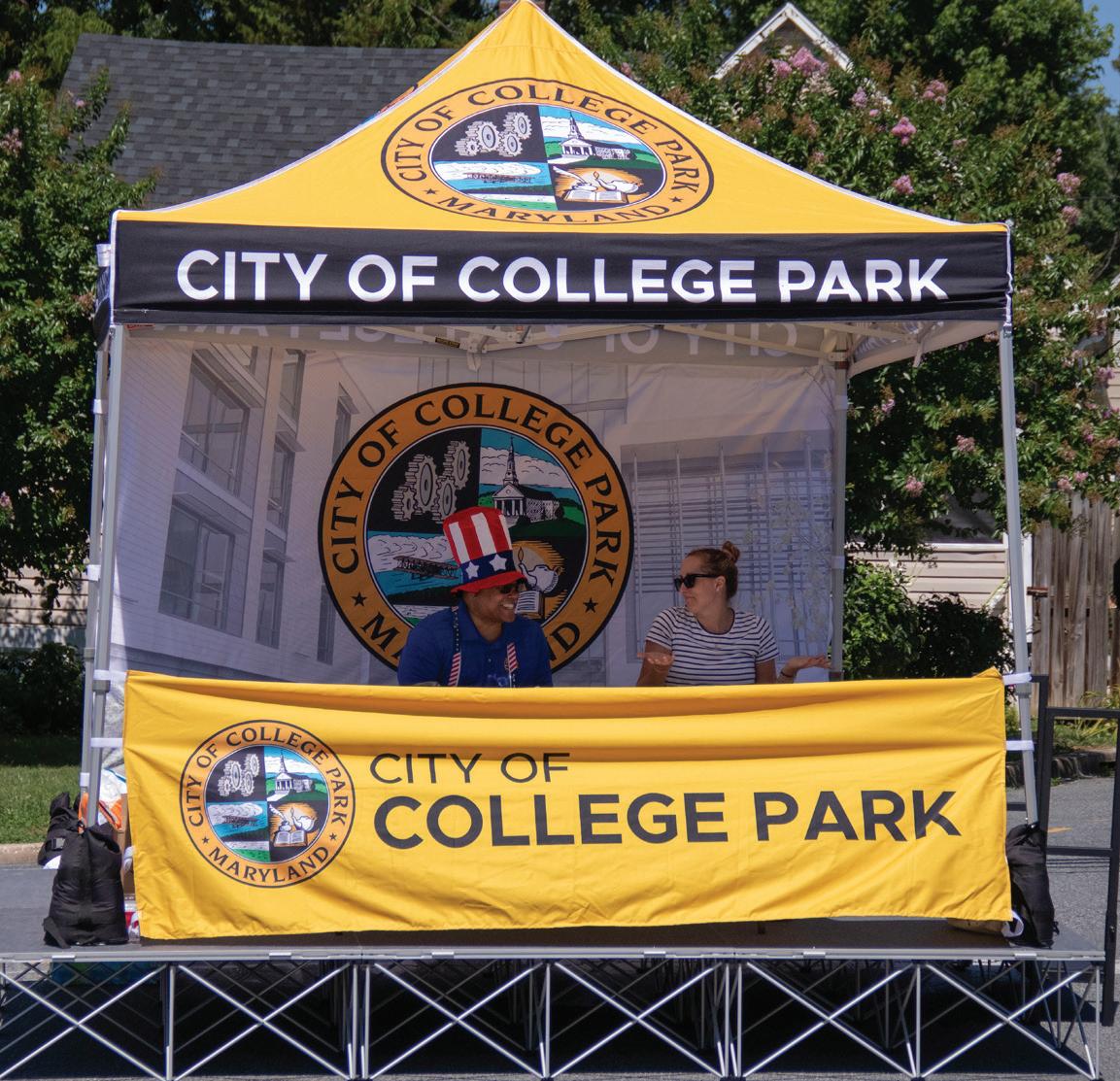

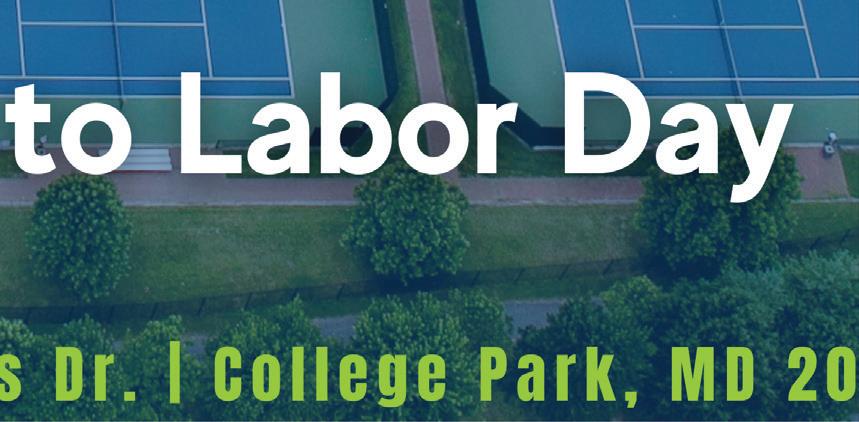











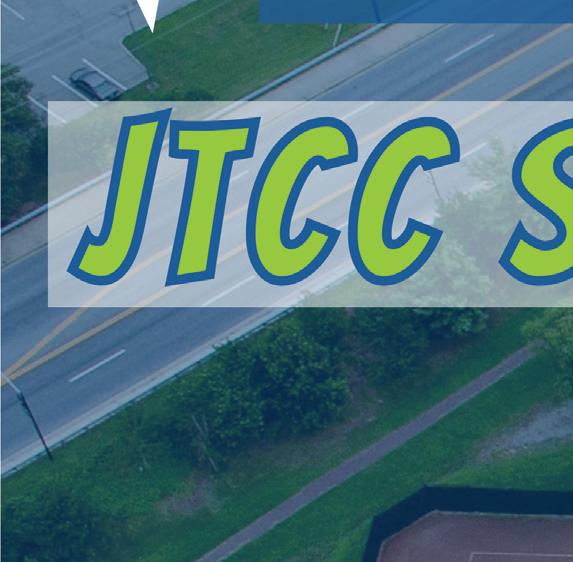






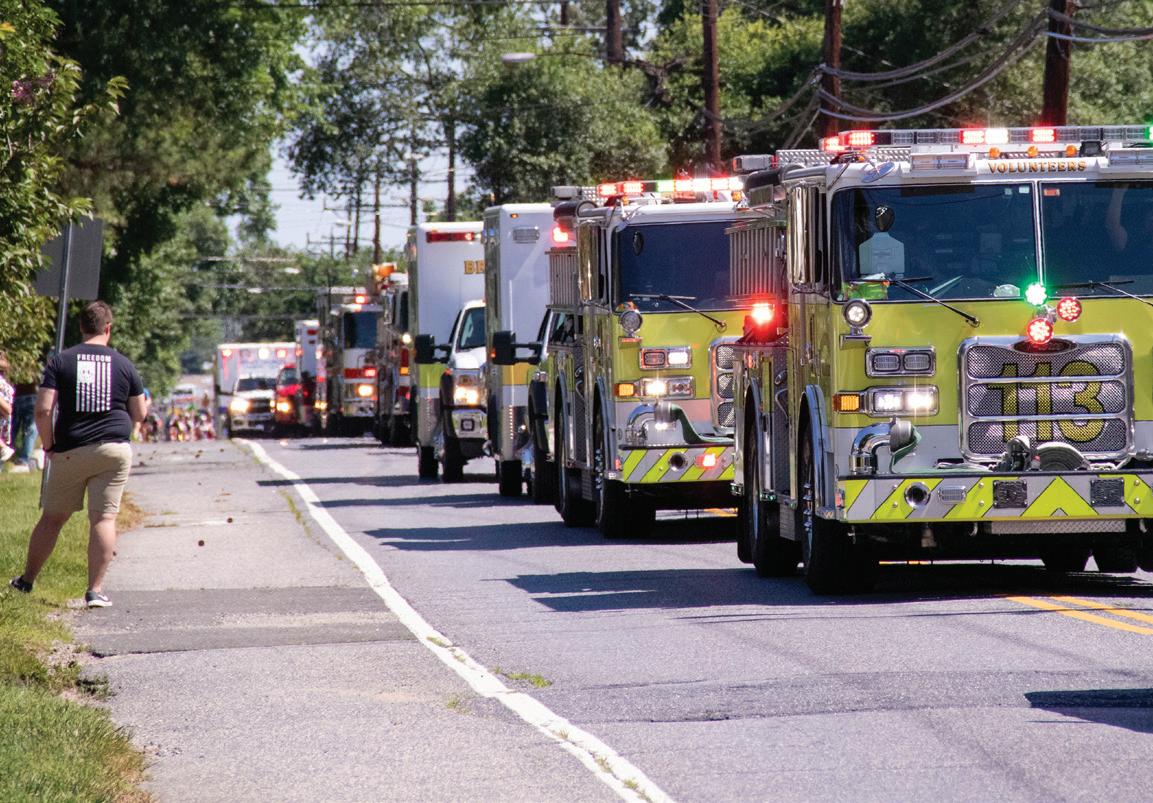
the community center is still in the feasibility study phase, which is expected to conclude at the end of 2022; she expects that the project will be approved and then move into the design phase by June 2023. Worshtil noted, however, that it is “possible, but not likely” that the project will not move forward.


Members of the North College Park Community Association (NCPCA) met on June 9, and in addition to electing new leadership, they discussed the center, citing a number of amenities they would like to see in the new space once it is completed. Mary Cook, former NCPCA president and a former College Park city councilmember, explained that “some people said, ‘oh, let’s have a gym,’ others said we need a multipurpose room, a computer room … there are many different ways we can look at it.”
Worshtil and her team at the parks department are taking community feedback seriously: They have presented their plans during community association meetings in the past, and will do so again at the end of the summer, according to Cook. With only 12,000 square feet of space
currently planned for the center, Worshtil has creative solutions for making the most of it. “We can create flexible spaces,” she said. “Seniors could use a room in the mornings, and teens could use the same room … in the afternoons.”
Although the final cost of the project is still in flux, Cook said that State Delegate Ben Barnes (District 3) has secured $1 million in support of the community center from the Maryland state budget. Worshtil mentioned that the City of College Park has also pledged financial support, although the exact amount will depend on the cost estimate determined by the feasibility study.

Incoming NCPCA President Alaina Pitt, whose one-year term began on June 10, said that this community center will help make her vision of a more diverse and inclusive North College Park a reality. After successfully campaigning on a platform based heavily on inclusion, she said, “I think the community center can serve as a catalyst for bringing the community together and for more interaction between neighbors.”
While there are still nine possible sites for the center under consideration, NCPCA members have expressed a desire
to see it built in the Hollywood area— and more specifically, at the intersection of Rhode Island Avenue and Edgewood Road, an area commonly known as Four Corners.
This comes on the heels of the $2.8 million city-funded Hollywood Streetscape project.
According to Councilmember Fazlul Kabir (District 1), the project will add “parklets, safe bike lanes” and other pedestrian-friendly features along Rhode Island Avenue from the Capital Beltway down to Muskogee Road, a stretch that includes the Four Corners area.
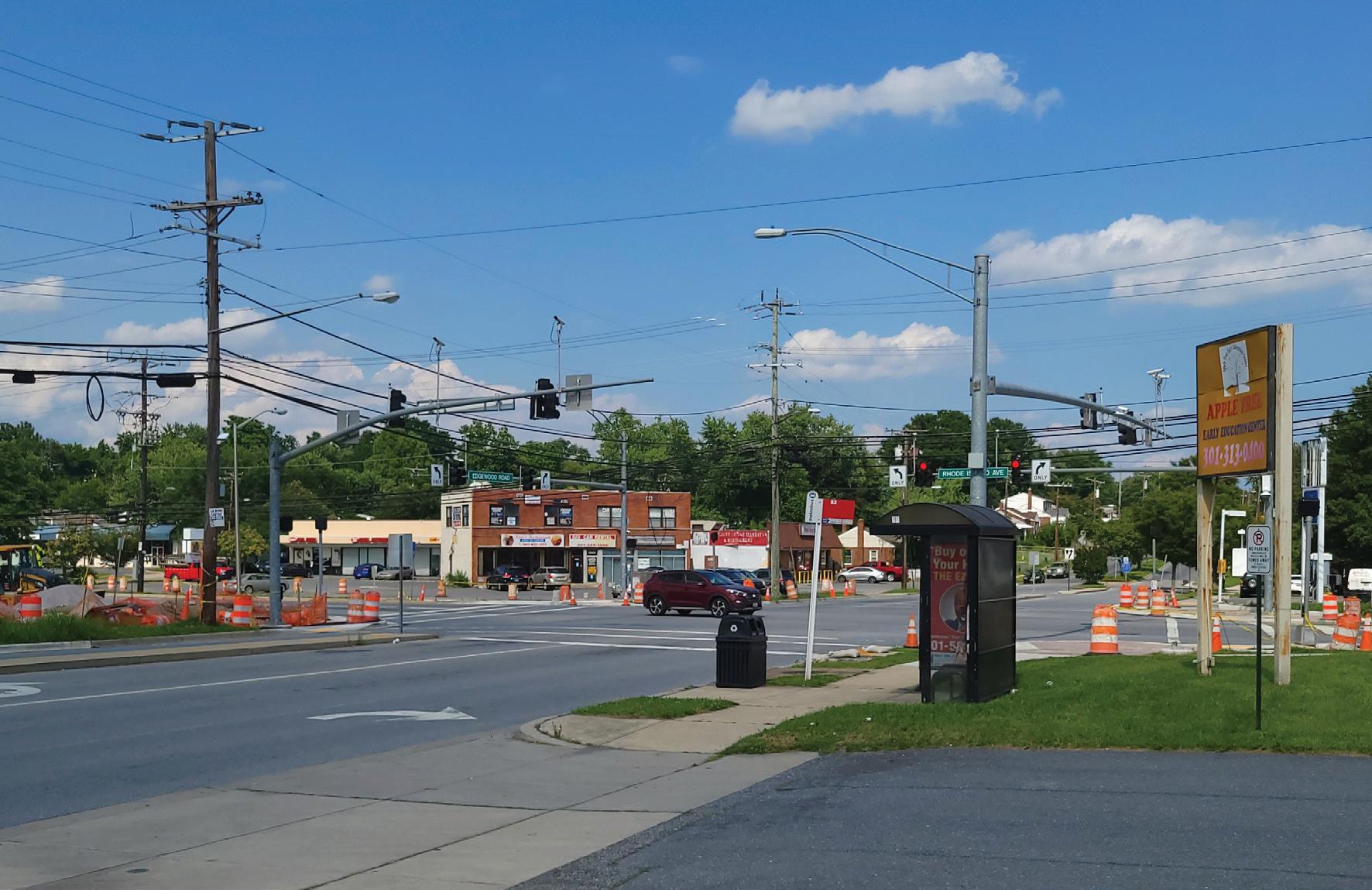
North College Park needs more than recreation space, though. Affordable housing is in high demand here, as it is in many small cities and towns across the country. This is where Scott Copeland, principal at RST Development (which he co-owns with his father and brother), hopes to be of service.
Copeland, a University of Maryland graduate, is spearheading development of a new 331-

unit apartment complex with ground-level retail space in the 9100 block of Baltimore Avenue, between Cherokee and Delaware streets. What’s more, RST is applying to the federal LowIncome Housing Tax Credit program, which could provide cost breaks for the company and lead to cheaper rents for residents.

“One hundred percent of the units will be reserved to serve households earning less than 60% of the area median income,” Copeland noted. The United States Department of Housing and Urban Development pegs the current median family income in the DMV at $142,300.

“There’s a great deal of need for affordable housing here,” said Pitt. Citing RST’s planned development, she noted, “... this building meets a lot of the goals of what the county and the city are setting out to do.” Pitt also expressed gratitude for Copeland’s planned green innovations for the building, which he said include bike paths integrated along the sidewalk, a partial green roof and a landscaped buffer on the western side of the building.
“We’re [also] eliminating three eyesores that are … not a big contributor to the community,” Copeland said, referring to the three motels currently occupy-
ing the space. Indeed, attendees at the most recent NCPCA meeting joked that there should be a ribbon-cutting ceremony for the demolition of these motels, rather than one marking completion of the apartments.
Still, not everyone in North College Park welcomes new private developments. While Cook is very excited about the new community center, she is decidedly less enthusiastic about RST’s proposed apartments.
“If I had my magic wand, I would not see any more development in College Park,” she said, “at least not on the north side.” Cook cited traffic and population density as concerns, adding that developers don’t “put money into the education system, or our public facilities like sewage or electricity.”
And residents like Cook, who has lived here for 20 years, are sad to see their old College Park fade away.
“There is a plan, a project coming forward for town homes on … North Autoville Road … That road is like what College Park used to be. … it’s kind of old country road,” Cook said. “It is the most contiguous … green space we have in College Park … my understanding is 10 to 30 town homes [will be] built there.”
City of College Park Revives an Old Tradition to Celebrate the Fourth of July Holiday a captivating melody.
is past Independence Day, the City of College Park revived a lost tradition by hosting its rst Fourth of July Parade in decades on Rhode Island Avenue.
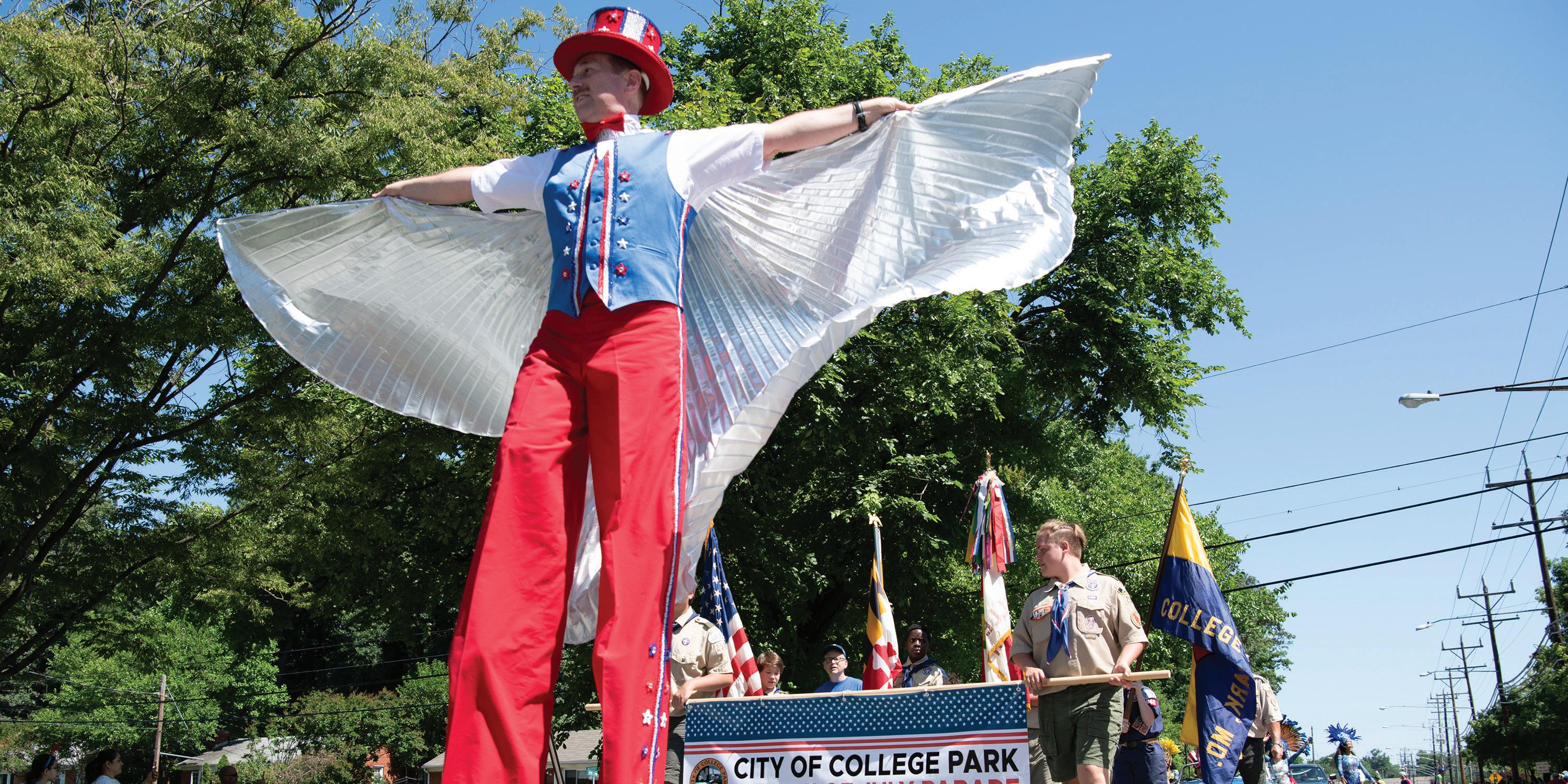
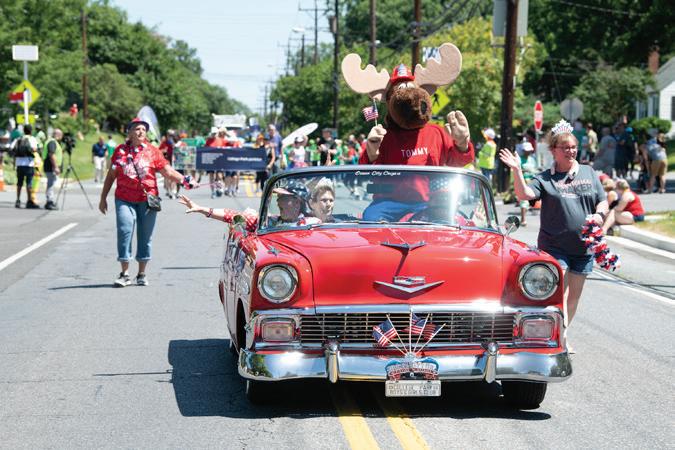





Over 400 participants, made up of local groups, organizations, and entertainers paraded down Rhode Island Avenue to celebrate our community and our country’s independence.
Beginning at the Hollywood Shopping Center parking lot and traveling just under 1 mile to end at Duvall Field, more than 40 groups took part in the procession.
e anxious crowd of over 2,000 waited for the caravan of people and vehicles, led by our three local re departments: Branchville, College Park, and Berwyn Heights.
Music was performed by several groups, including the Louisianastyle party brass band, the Wild Anacostias, and the Mariachi Los Menganones del Sur group, a quintet that harmonized their guitar, trumpet, bass, and violins in
Boy Scout Troop 298, Girl Scout Troops 96 and 3163, Holy Redeemer School Home and School Association, UMD STEPP, Neighbors Helping Neighbors, College Park Food Bank, College Park Park Run, and College Park Arts Exchange also took part alongside other characters such as stilt walkers, jugglers, samba dancers, mimes, and clowns.
Participants rode convertables, made oats, sang songs, danced, dressed as fruts and veggies, gave away treats and ags, and more as they walked down the route.
Residents were greeted by the City’s Mayor and Council who walked, or in the case of Mayor Patrick Wojahn, rode the parade route in a Tahiti Blue 1976 MGB roadster.
ank you to the volunteers, participants and thousands of attendees for coming out and helping celebrate our Country’s Independence.
All events are from 6:30 to 8:30 pm at City Hall Plaza (7401 Baltimore Avenue). Free Parking during the event will be available at the Downtown Parking Garage.
Details at www.collegeparkmd.gov.
Upcoming Friday Night LIVE Dates:
July 15 – Salsa and Fiesta
August 12 – Sing me the Blues
September 9 – Oktoberfest!

















July 15, 2022 6:30 to 8:30 pm City Hall Plaza

e City of College Park is hosting a series of concerts this summer and you are invited! Join us on the plaza at the new City Hall building on select Fridays for Friday Night LIVE! e events will feature a variety of musical genres and performers and will include something for everyone. ere will be children’s performers, activities and arts and crafts available for kids as well.
e theme this month is Salsa and Fiesta! Sign up to take salsa lessons (starting at 5:30 pm) by emailing events@collegeparkmd.gov

All concerts will be held at City Hall Plaza (7401 Baltimore Avenue) between May to September from 6:30 to 8:30PM. Parking will be o ered for free at the Downtown College Park parking garage at the corner of Yale and Knox. Local food and beer will be available for purchase during the event!

Saturday, July 30, 7:00pm Duvall Field
e City of College Park will host a Family Night at the Movies on Saturday, July 30th at Duvall Field. Activities start around 7:00pm with games for the kids and adults. e movie will be shown around 8:00pm. Popcorn will be available. Bring your lawn chairs and blankets to sit outside on the grass. No pets, tents, or umbrellas please.
NATIONAL NIGHT OUT
Tuesday, August 2, 2022



























Hosted each year by neighborhood civic associations, National Night Out promotes police-community partnerships and neighborhood camraderie. is year, Berwyn, Lakeland, and College Park Woods neighborhoods have committed to hosting an event. Contact your civic association representative to support National Night Out activities in your neighborhood!
Check our website as the event gets closer for more information.























COLLEGE PARK DAY
Saturday, October 15, 12pm - 6pm College Park Aviation Museum
Save the date for College Park Day on Saturday, October 15, 2022, from 12:00 to 6:00 p.m. at the College Park Aviation Museum and Airport (1985 Corporal Frank Scott Drive)! is is the City of College Park’s signature event and features a wide array of activities, entertainment, and fun to celebrate the community. e event is open to the public and free to attend. Details: www.collegeparkday.org.




FREE SUMMER PARKING

May 28 - August 13, 2022











Downtown Parking Garage
Free parking is in e ect between May 28 to August 13, 2022 in the Downtown College Park Parking Garage! Park there for free while you visit local shops and restaurants on weekdays after 5pm and all-day on weekends.
Ordinance 21-O-09

Trees are a vital part of our ecosystem. e City’s 2018 Tree Canopy Assessment revealed that the urban tree canopy is under threat. e report showed that the City’s tree canopy has declined from 44% in 2009 to 38% in 2018 and that the losses appear largely due to either construction or individual tree removal.

e City has already begun working with developers and organizations to stem the loss from construction or projects through replacement trees and other methods. A majority of the City’s tree canopy is in residential neighborhoods -- this means our residents can make a big di erence in helping to maintain our tree canopy!
On May 10, 2022, the City Council


approved Ordinance 21-O09, which will require a permit to remove trees on residential land beginning July 1, 2022. e ordinance was enacted to limit the removal of structurally stable, mature trees as a measure to maintain the City’s tree canopy.
e Tree and Landscape Board and City Council held numerous public meetings and incorporated changes to address many concerns and suggestions from residents.
Residents, property owners, and tree and landscape companies may have many questions about this new permitting process. For details, FAQs, and the application, visit www.collegeparkmd.gov/ trees. ere is no application fee for a permit.
Ensure you have virtual parking permits for your vehicles Received a residential parking permit renewal letter? Or need a parking permit, but you’re just not sure how to apply for one?
Since permit parking rst began in the City back in the late 1990’s, permits and visitor passes in residential areas renew on an annual basis. While the City has started virtual permitting, the renewal process remains the same.
Residents must apply each year to register/renew their virtual parking permit(s) for their vehicle(s) and/ or obtain new visitor passes for the upcoming year period, as permits and visitor passes do not automatically renew.
Please keep in mind that all residential permits are now virtual; the City no longer o ers hang-tags to residents.




Homeowners can apply for residential parking permits and visitor parking passes online at https://collegepark.aimsparking. com. You will need to create an account in order to get your passes online. Residents can also apply via mail or in-person at City Hall.
Visit www.collegeparkmd.gov/ payandapply#residentialpermits for full details (including printable application forms) or for more information on parking permits for tenants or monthly pre-paid permits.
More information: www.collegeparkmd.gov
e City of College Park has been distributing more than 1,000 athome COVID-19 test kits to City residents.
If you are a City resident and would like a FREE COVID-19 AtHome Test Kit, you must ll out the reservation request form at https:// cityofcollegepark.formstack.com/ forms/covid19testkitrequest.
More details available on the City’s website and the form link above.
E ective July 1st, the City will begin use of a new reporting system for general concerns and/or complaints. Links to and registrations for reporting through Comcate will be deactivated. Please share your concerns about a property in the City, such as tall grass or other issues, at www. collegeparkmd.gov/tellus.
E ective July 1st, the City will begin use of a new product that will allow our property owners, business owners, and contractors to initiate
the City’s required occupancy permit and building permit proces online. Users can search available permit applications, and apply for new permits as needed. To create a new application, you must register for an acount. Find details at www. collegeparkmd.gov/permitapps.
THE CITY IS HIRING!
e City is Hiring! e City has several jobs available. Apply here: collegeparkmd.applicantpool. com/jobs.
City residents can bring electronics for recycling to the drop o box near the entrance of the front doors to Davis Hall. No more than 3 items can be disposed of at no cost.
• Accepted: TVs, monitors, mouse pointers, keyboards, microwaves, gaming systems, computers, hard drives, cell phones, printers, laptops, surge protectors, copiers, fax machines, telephone systems, cable, circuit boards, and toner cartridges.
• Not Accepted: Light bulbs (CFL or Tubes) or batteries of any kind.
More information: www.collegeparkmd.gov/trees
Trees provide many bene ts such as reduction of cooling and heating costs, interception of rainwater, increasing property values and improving air quality. e City o ers a few ways to help. More information (along with all applications and forms) is available at www.collegeparkmd.gov/trees.
• e City is gauging interest in a potentially new tree planting program for residents. If you are interested in having a tree planted on your property by a contractor, please complete the interest form on the City website in the trees section. When lling out the form, select Tree Planting on residential property or contact horticulturist@collegeparkmd. gov.
• REQUESTS FOR STREET
TREES: e City has a program that provides for street tree planting in the right-ofway area, which includes
City Business & Non-Pro t and Individual & Family Assistance Grants
business impacts.
e City has established two programs to assist businesses, non-pro ts, and residents address negative nancial impacts caused by the COVID-19 pandemic.
In March 2021, the U.S. Congress passed the American Rescue Plan Act (ARPA). ARPA provides funding for many programs and services to residents and small businesses of College Park. e graph above illustrates some of the uses and positive impact of ARPA funding in our community.

Businesses and non-pro ts must have a physical presence in the City of College Park, employ 75 or fewer full-time (or equivalent) sta , and have been in operation as of November 1, 2021. Certain age-restricted stores are excluded, and national franchises with local owners will be considered on a case-by-case basis.
For additional details, as well as the application form and required documentation, please visit www.collegeparkmd.gov/ arpa#business.
the grass strip between the curb and sidewalk. College Park residents interested in requesting a tree can contact Brenda Alexander at 240487-3590 or balexander@ collegeparkmd.gov. e location will be inspected to determine if it is suitable.
• TREE CANOPY ENHANCEMENT PROGRAM (TCEP): City of College Park property owners can apply for reimbursement of up to $150.00 annually, for approved tree(s) planted on their residential lot. e completed application should be sent to horticulturist@collegeparkmd. gov for review and approval.
TREE MAINTENANCE: e City is responsible for tree maintenance in the rights-of-way, City maintained buildings and parks, and on public property. Trees on private property are the responsibility of the property owner.

e American Rescue Program Act (ARPA) has provided funds that the City is using for these and many other projects. Each program is summarized below. e goal of these programs is to help our residents, businesses and nonpro ts get back on their feet and better prepared to be nancially successful in the future.
For additional information, please visit collegeparkmd.gov/ arpa. Have questions? Email arpa@collegeparkmd.gov with questions for any of the City’s ARPA assistance programs.
2021 ARPA BUSINESS & NONPROFIT ASSISTANCE GRANT PROGRAM
Grants up to $25,000 for Operating and Small Capital Expenditures
is program can provide eligible small businesses and non-pro ts with nancial assistance for a wide range of operating expenses and capital investments, such as new equipment, website/ online shopping enhancements, façade improvements, and other costs associated with COVID-related
2021 ARPA FINANCIAL ASSISTANCE PROGRAM FOR INDIVIDUALS & FAMILIES
Grants up to $5,000 per applicant e purpose of this program is to provide nancial assistance to eligible College Park individuals and families who have a demonstrated nancial hardship created by the COVID-19 pandemic.
Eligibility is determined by residency in the City of College Park and proof of need. Applicants are required to provide proof of residency, proof of hardship, and provide certain information/ documentation so the City’s review committee can ensure the request ful lls the program requirements.
e maximum nancial assistance per applicant is $5,000 for eligible expenses (vendors will be paid directly). Assistance for groceries will be in the form of gift cards to College Park stores. Only one application per household.
For additional details, as well as the application form and required documentation for resident assistance, please visit www. collegeparkmd.gov/arpa#resident.
BASEBALL
to a super regional, the step before the College World Series in Omaha, Neb.
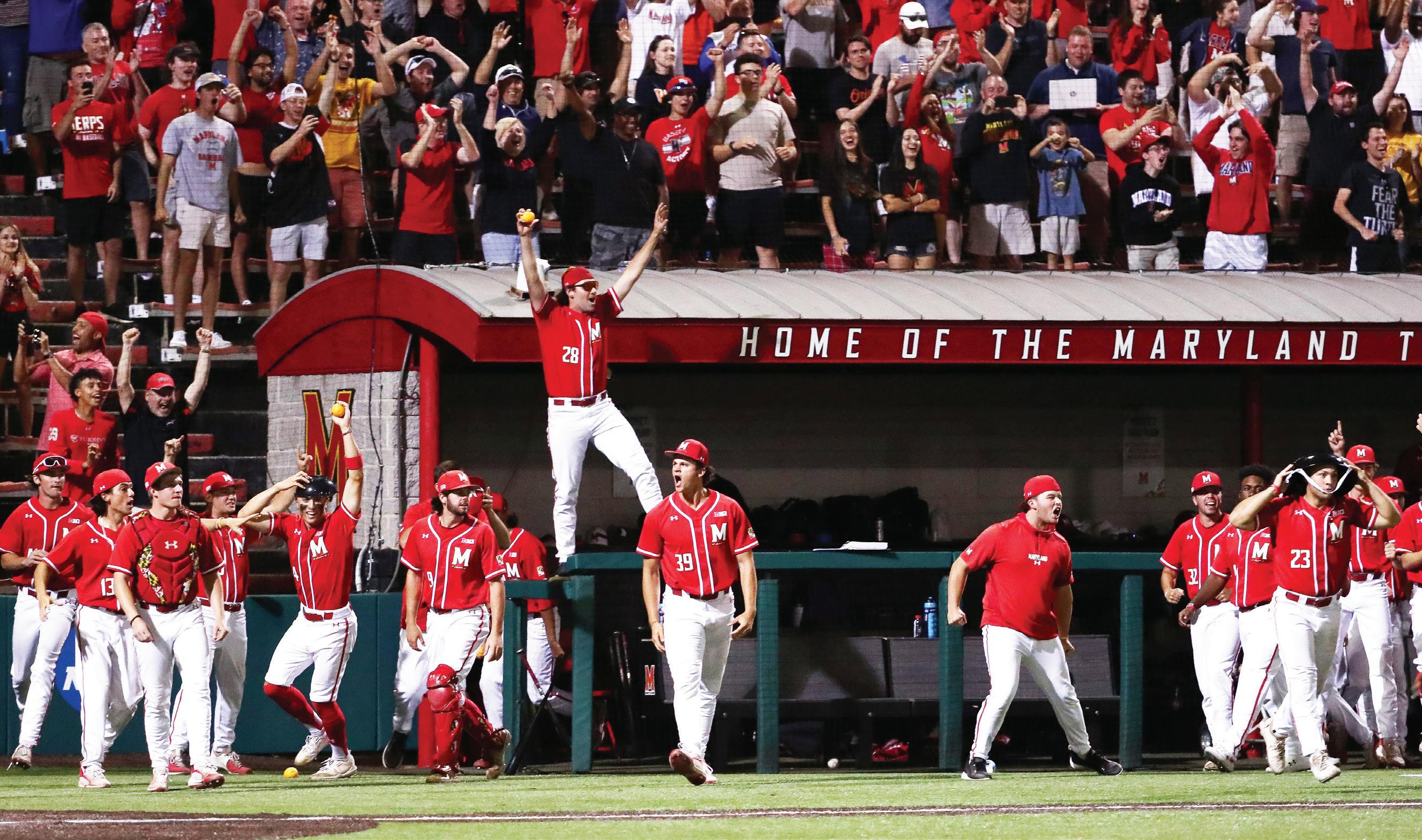
“We’re gonna keep building this thing,” Maryland coach Rob Vaughn said. “This group is gonna walk through the gates in Omaha; there’s no doubt in my mind. This group is gonna do some special things.”
The Terrapins opened the College Park Regional on June 3 with a 23-2 demolition of Long Island. They lost to Connecticut the next day in the double-elimination tournament. Maryland stayed alive by winning twice on June 5.
First, it scored six runs in the eighth inning of a 10-5 victory over Wake Forest and then got an RBI single from junior third baseman Nick Lorusso to beat UConn 7-6 in 11 innings.
The season ended with an 11-8 loss to Connecticut in a contest the Terps trailed 9-1 after four.
Vaughn said his team’s rally
displayed its toughness.
“Our guys emptied the tank,” he said. “They gave our team and they gave each other every ounce of who they are. We can leave here with our heads held high, knowing we did some really special things this year.”
Maryland’s final game came in front of 3,000 fans on Shipley Field at Bob “Turtle” Smith Stadium. Ticket demand was so high for the tournament that temporary bleachers were added in left field.
“You can see how much [the fans] cared that we were hosting a regional,” sophomore infielder Kevin Keister said. “We had great fans out here this whole weekend.”
On April 15, junior outfielder Bobby Zmarzlak hit a three-run walk-off home run to lift Maryland to an 8-6 victory over Ohio State. In a 13-0 win over Northwestern on April 29, Ryan Ramsey threw a perfect game. It was just the 20th nine-inning perfect game in college baseball history and first for Maryland since 1959. The junior lefthander was second in the nation in victories (11-1), had a 3.22 ERA and held opponents to a .193 batting average.
The Terrapins finished 18-5 in the Big 10 and won the conference championship with an 18-7 triumph at Purdue. For the year, they scored 10 or more runs 23 times.
Among the team records Maryland set this season were most home runs (137), runs (572), hits (683), doubles (143), walks (337) and RBIs (534).
INDIVIDUAL ACCOLADES

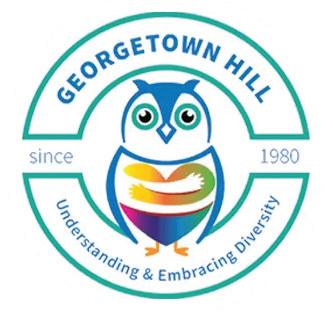
Vaughn thinks Alleyne will one day play in the Majors. “I couldn’t be more proud of him,” he said. “Just an unbelievable human, unbelievable kid. We’re gonna watch him play on TV one day.”
Ramsey, junior left-hander, was second in the nation in victories (11-1), had a 3.22 ERA and held opponents to a .193 batting average. He was named first-team All-Big 10 and second-team All-American.
Sophomore Luke Shliger, who caught Ramsey’s perfect game, set the school mark for runs (79). He paced the squad in batting average (.353), hits (88) and
The Terrapins and their fans celebrate during Maryland's 10-5 victory over Wake Forest in the College Park Regional.
COURTESY OF MARYLAND ATHLETICS
walks (54) and was fourth in RBIs (58).
Sophomore right-hander Jason Savacool finished 8-3 with a 2.93 ERA. He paced the Terps in innings pitched (107.2) and strikeouts (123). He was named first-team All-Big 10 and second-team All-American.
“Now that it’s over, I think we’ll be able to look back at a team that broke every record, from wins to homers,” said Vaughn, who received a contract extension to coach Maryland through 2027. “Records were shattered this year by this group, and they set the standard for what it means to play here. … We’ll build this thing and be back.”
Chris McManes (mick-maynz) covers University of Maryland athletics for the College Park Here & Now
opened the Board and Brew on the ground floor of the Varsity apartment complex, in 2014, their vision was different than Stephenson’s. While the Game Kastle has snacks and soft drinks available for purchase, the Board and Brew has a full kitchen, front staff and the most popular local beers on tap. While Game Kastle does have dozens of free demo games for people to try, the Board and Brew has over 850, complete with dedicated staff known as game gurus to teach those games to patrons. With its different business model, the Board and Brew also attracts a different clientele than Game Kastle does, just a few blocks up Baltimore Avenue. “There are lots of places that are designed for more hardcore gamers, but that’s not who we are,” said Epstein. “We even have a lot of [University of Maryland] athletes nearby, and even some of them come by and play games.” As such, there aren’t many games for folks to buy and play at home, Epstein says. The Board and Brew formula was so successful that
its three proprietors were able to open a second location, in Philadelphia,in February 2020. Then the coronavirus pandemic threw a damper on things.

“Philadelphia, we stayed closed for a full year, and now that’s growing” said Epstein, “but since things have really started to open up again, [the College Park location] has been

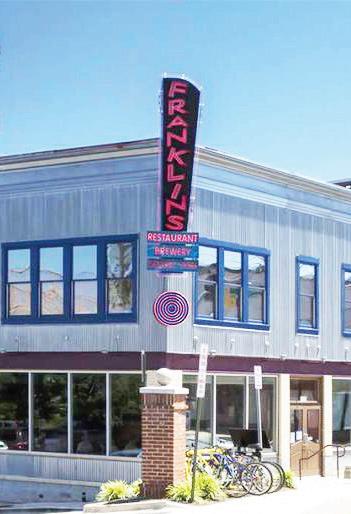
doing really, really well.” Not every gamer has enjoyed these re-openings — or even the reconvening of private game groups long separated by lockdowns and quarantines. Jared Mitaski, a long-time hobbyist who just moved to College Park in the past year, has not yet made the leap back to inperson table time.
“It’s hard to know who to trust,” Mitaski said, “you never know who is vaccinated, who will wear a mask.” Still, Mitaski is on the Game Kastle Discord server, trying to piece together a game group with which he and his partner are comfortable.

Stephenson said he has organizers from as far afield as
Virginia who patronize his store specifically because he takes community health so seriously. “We have immunocompromised people on staff. We have immunocompromised people in our community,” he said. While there is no longer a mask mandate in-store, many players were fully masked for Free RPG Day, and industrialsized bottles of hand sanitizer were within easy reach of most gaming tables.
The staff at Game Kastle are excited to keep growing past the hurdles of COVID-19 and into a new generation of enthusiasts. Josi Bender, a store associate and dungeon master (a special role in RPG gaming, a person who verbally guides the other players through their sessions) for hire, will be running a Dungeons and Dragons summer camp for youths ages 1014 this summer.
Stephenson thinks young gamers can learn math skills, conflict resolution and so much more from tabletop gaming, and Bender agrees. “Beyond that, I think of how I’ve benefited from tabletop gaming,” she says, hoping to pass at least some of those benefits on to her campers in July.
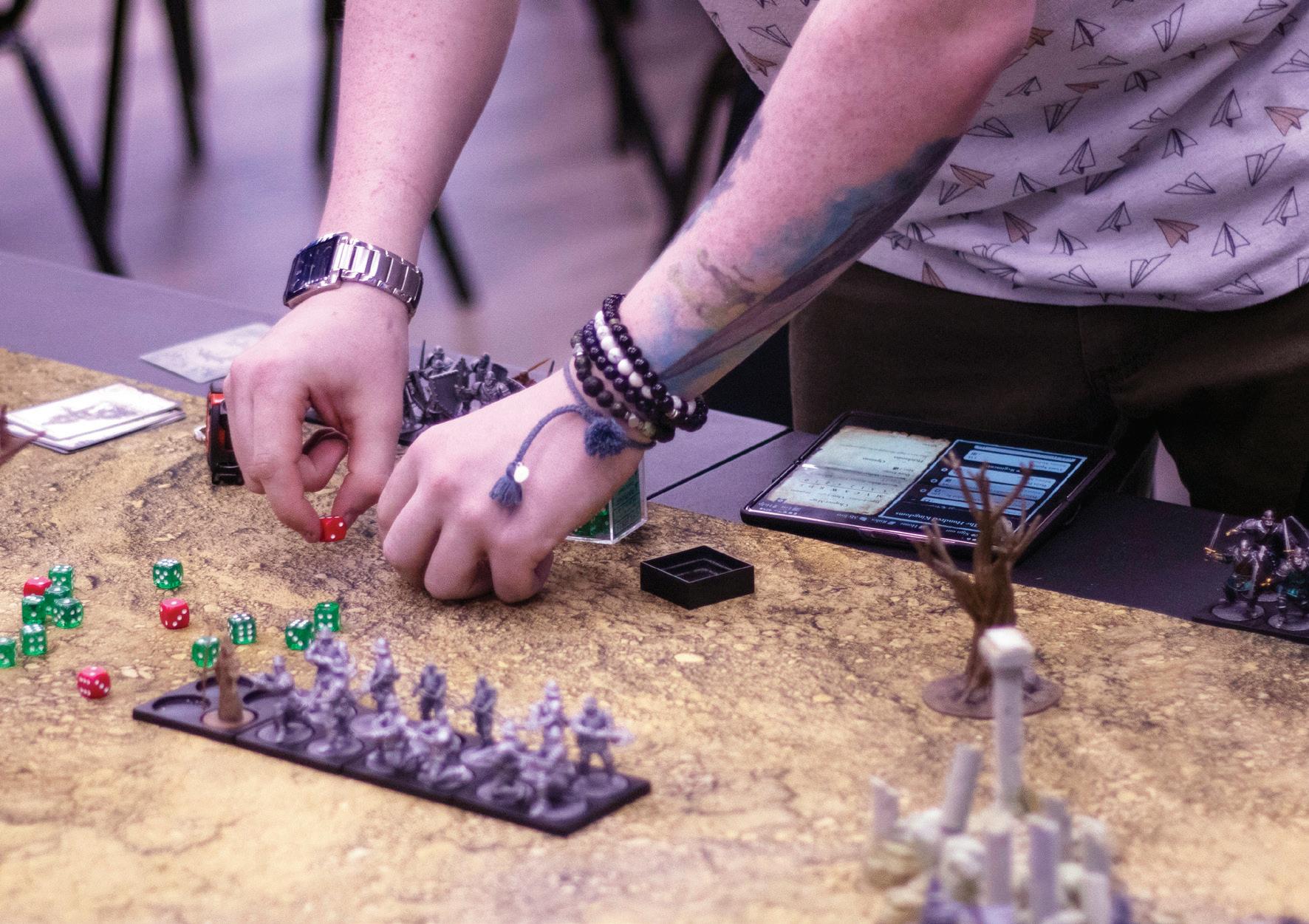
SAVE THE DATE
The History of Blue Sky Puppet Theatre. Route 1 Corridor Conversations sits down with Cayo Cotter, founder and director of the University Park-based Blue Sky Puppet Theatre. July 16, from 2 to 3:30 p.m. To register, go to hyattsvilleaginginplace.org and click on Programs and Activities.

Cycling Seniors Club Ride. Join park rangers and the Cycling Seniors Cycle Club for a ride from Lake Artemesia to the Kenilworth Aquatic Gardens. Ages 60 and older. New riders are welcome. Free for residents of Prince George’s and Montgomery counties. For more information, call 301.446.3403.
Summer Sing 2022. Join University of Maryland graduate student conductors Mark Helms and Nathan Lofton to rehearse and then perform Joseph Haydn’s The Creation. Open to all singers over age 16, and free for singers and audience. July 20; rehearsal 6 p.m., performance 8 p.m. The Clarice Smith Performing Arts Center. For more information and to register, go to theclarice.umd. edu/calendar
Family Fun Day at Duvall Field. Bring your family and friends to Duvall Field for face painting, moon bounces, raffles, food and more! July 23 from 2:30 to 7 p.m. Free to attend; pay for what you do. Proceeds will benefit the Desks Project, College Park’s own nonprofit organization supporting students in Malawi. Register at thedesksproject.org
Kayak with a Ranger. A rare opportunity to kayak on Lake Artemisia! Aug. 13, from 10 to 11:30 a.m. $5 resident; $7 non-resident. To register, go to pgparksdirect. com and search using activity code 22627-459C

Trekking the Tarmac. Take a guided walking tour outdoors at the College Park Airport, the oldest continuously operating airport in the world. $10 resident; $13 non-resident. Aug. 13 from 11 a.m. to noon. To register, go to pgparksdirect.com and search using activity code 18400-415C
Virtual Book Club. The College Park Arts Exchange invites you to discuss Mudlark: In Search of London’s Past Along the River Thames, by Lara Maiklem, on July 19, and The Boston Massacre: a Family History, by Serena Zabin, on Aug. 16. Free. 7 to 8:30 p.m. RSVP by emailing info@cpae.org
College Park Community Library Book Club. The library’s book club will discuss Coffin Road, by Peter May, on July 14, and The Japanese Lover, by Isabel Allende, on Aug. 11. The group meets at 7:00 p.m. in the lower level of the College Park Church of the Nazarene, 9704 Rhode Island Ave. For more information, email Carol Munn at donkinc@msn. com
Free Shakespeare at the Riversdale House Museum. All the world’s a stage — including the Riversdale House Museum’s lawn! Pack a picnic and bring a chair to Heritage Division's performance of Shakespeare’s Macbeth. July 20 at 7 p.m. 4811 Riverdale Rd, Riverdale.
National Night Out. Lakeland Community Park invites you to meet officers from the College Park Police Department at a bonfire with free hot dogs and cold drinks as part of annual NNO that promote community relationships and safety. Aug. 2, from 6:30 to 8:30 p.m. For more information go to natw.org
Summer Senior Coffee Social. Neighbors Helping Neighbors College Park has teamed up with Proteus Brews to host a senior coffee hour every Thursday morning from 9:30 to 10:30 a.m. All ages welcome! 9827 Rhode Island Ave. For more information or to arrange a ride, call 301.222.3434 or email coordinator@nhn-cp.org
ESL Classes. Participants will practice using English to improve reading, writing and speaking skills. $20 per session. Textbook provided; bring paper and pen and pencil to take notes. Tuesday evenings through August from
6:30 to 8 p.m. Lower level of the College Park Church of the Nazarene, 9704 Rhode Island Ave.
The Art and Craft of Puppetry Museum Exhibit. Visit The Clarice Smith Performing Arts Center at the University of Maryland to learn about the history of puppetry in art. Exhibit in the center’s library includes an original puppet made by The Jim Henson Company (of muppet fame) Until July 29. Free. For more information and hours of operation, go to lib.umd.edu/ visit/libraries/mspal
Free Yoga at Lake Artemesia. Free yoga sessions at Lake Artemesia every Saturday this summer. Hour-long sessions start at 9:15 a.m. (meet near the restrooms). For more information,
including registration details, email wellness@pgparks.com
The Hall CP. Open mic nights, wine-down Wednesdays, live music concerts and more! For the latest information, go to thehallcp.com/events
Friday Dance Workshops. Join instructor Karen Stewart, of Jessie’s Soul Line Dancers, every Friday from 10 to 11 a.m. for stepby-step instruction and dance along to soul, gospel and pop music. For more information, go to cpae.org
Ballet Classes for Children. Creative dance (ages 3-6) and primary dance (ages 5-7) classes will be offered throughout the summer. Creative dance classes
The area’s best Mac support for when things go slightly or horribly awry. PCs welcome too!

are on Tuesdays 10 to 10:45 a.m. and Thursdays from 2 to 2:45 p.m. Primary dance classes are on Tuesdays from 11 a.m. to noon and Thursdays from 3 to 4 p.m.
Old Parish House, 4711 Knox Rd. For registration and fees, go to berwynballetschool.com/ summer-programs
College Park Farmers Market at Paint Branch Parkway. Farm stands, local vendors and more. Saturdays from 8 a.m. to 1 p.m. 5211 Campus Dr.
Wednesday Tap Dance Workshops. Free virtual tap workshop with instructor Elizabeth Gardner every Wednesday from 7 to 8 p.m. For more information and to register, email info@cpae.org
Hollywood Farmers Market. Saturdays, from 9 a.m. to 1 p.m. in the parking lot of the Hollywood Shopping Center.
College Park Community Library Story Time. Story time with Micki Freeny every Wednesday from 9:30 to 10:00 a.m. If weather permits, gather on the church’s front lawn. If weather forces the event indoors, the library will require masks and

respect social distancing. The library is located in the lower level of the College Park Church of the Nazarene, 9704 Rhode Island Ave.
Food Assistance Available. Help by Phone Ltd. operates food pantries across Prince George's County, with locations at Berwyn Presbetyrian Church (Greenbelt Rd.) and University Baptist Church (Campus Dr.). To schedule a pickup, call 301.699.9009, Monday through Friday, from 10 a.m. to 2 p.m.
Yarrow Civic Association. Membership is free. For more information, email Wendy Kelley at wendybird85@yahoo.com
College Park Estates Civic Association. There will be an organizational meeting in August. Date and time TBD. For more information, email Ray Ranker at rayranker@gmail.com
West College Park Citizens Association. Membership is open to all residents of West College Park over age 18. For more information, email Suchitra Balachandran at cp_woods@yahoo.com
Berwyn District Civic Association. BDCA’s monthly meeting will be on July 21 at 7:30 p.m. and on each third Thursday of the month after that. To register, email president@myberwyn.org
North College Park Community Association. The NCPCA will meet on July 14 at 7:30 p.m. and each second Tuesday of the month after that. For more information, go to myncpca.org
Lakeland Civic Association. Next virtual meeting is Aug.t 11 from 6:30 to 7:30 p.m. For login information, email lakelandcivic@ gmail.com
Old Town College Park Civic Association. For more information and to add your name to the listserv, email Kathy Bryant at kdbryant20740@gmail.com
Calvert Hills Citizens Association. Next meeting is at 7 p.m. on Sept. 7. For more information, go to calverthills.weebly.com or email the board at calverthills citizensassn@gmail.com
From the bedroom window of my childhood home, I would gaze at the lake just across the railroad tracks. In the summer there were waterlilies, and the fall brought cattails, followed by a covering of ice in winter. My father told tales of his childhood at that lake with his friends — my friends’ parents — swimming, fishing and skating. By the 1960s, it was no longer safe to fish or swim in the lake, but Daddy taught us to skate there in the winters. To us, this was simply Lakeland’s lake. But even as there’s evidence that natural lakes used to exist in Maryland, none survive today. So how did this lake come to be? It exists thanks to the two rail lines just feet from its bank.
Lake Artemesia’s story dates back to the mid-1800s, when workers excavated stone for construction of the Baltimore and Ohio (B&O) Railroad, leaving an enormous hole. While many likely saw this hole as an eyesore, Edwin Newman, a local attorney, inventor and developer, saw opportunity. He purchased the pit and the area surrounding it and drew up a plan for a resort-style community which he named Lakeland. The community was conveniently located on the B&O line between Washington and Baltimore and was easy to get
to, with 20 passenger trains stopping every day at the station right by the lake.
The main feature of Newman’s development was that hole in the ground, which he named Lake Artemesia in honor of his wife. Newman filled the lake using water from nearby natural springs, and he piped in more water from Paint Branch. Newman’s lake covered 7 acres and was a modest 5 feet deep.
Newman then set about making the community around the lake into an attraction. Investing the equivalent of more than $4.25 million in today’s dollars, he built homes on tree-lined streets. According to an 1891 article in The Washington Post, Newman also spent an additional $2 million in today’s dollars to enhance the lake itself. He stocked it with bass, built wooden walkways and brought in pleasure boats, all in an effort to create a 12.5-acre park, also named for his wife. By 1893, people were flocking to the lake from as far away as the District to skate in the wintertime.
A multi-faceted businessman, Newman seized upon another way to take advantage of the geological features in Lakeland. The community was nestled in a hollow near both Indian and Paint Branch creeks, and much of the area around the lake was marshy — a challenging spot to build
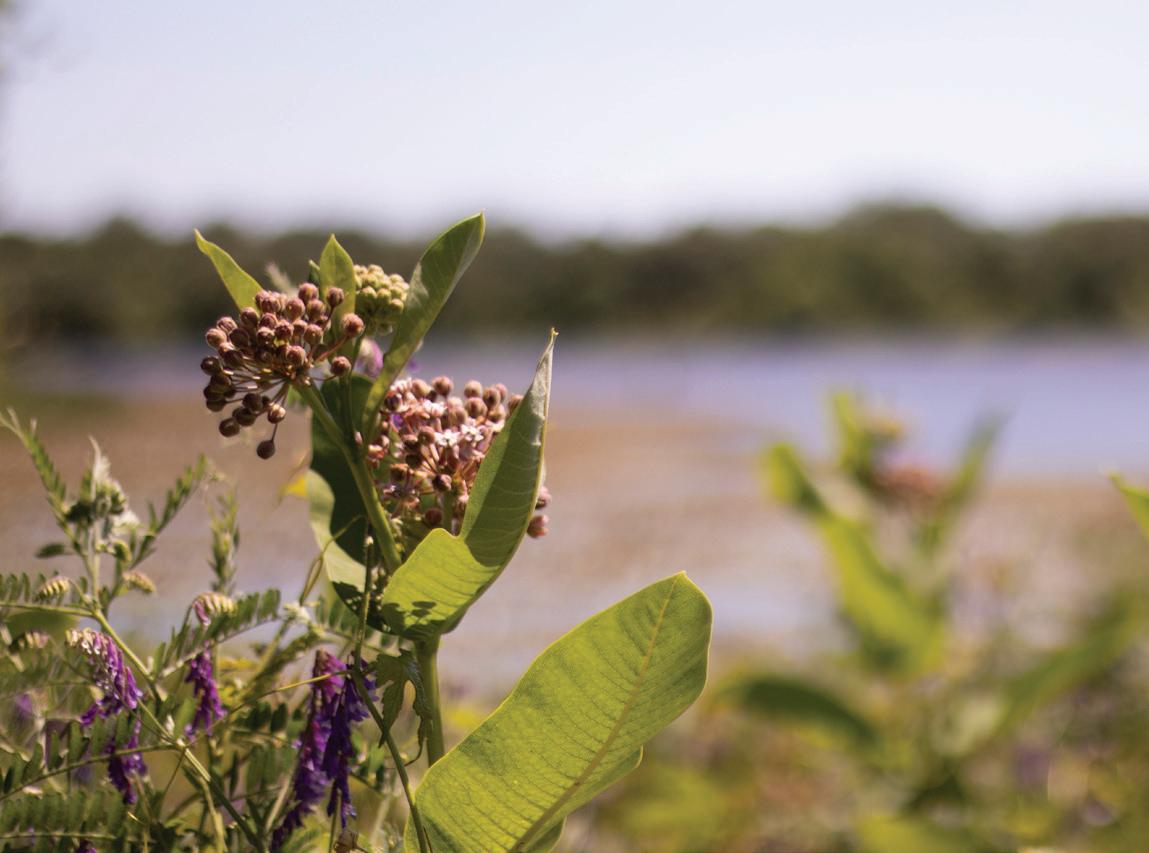
homes but a great one for aquaculture. Newman established Aquarium Fisheries in 1903 to grow and sell fish and aquatic plants. Over time, the operation expanded to include several ponds on both sides of the railroad tracks.
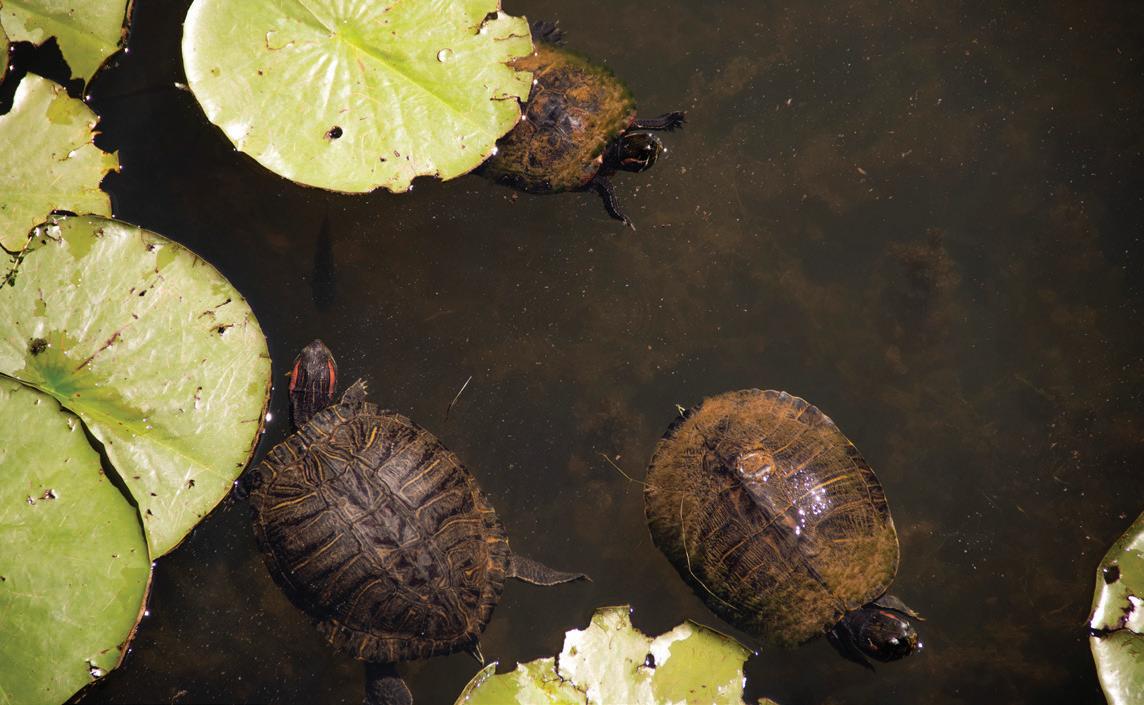
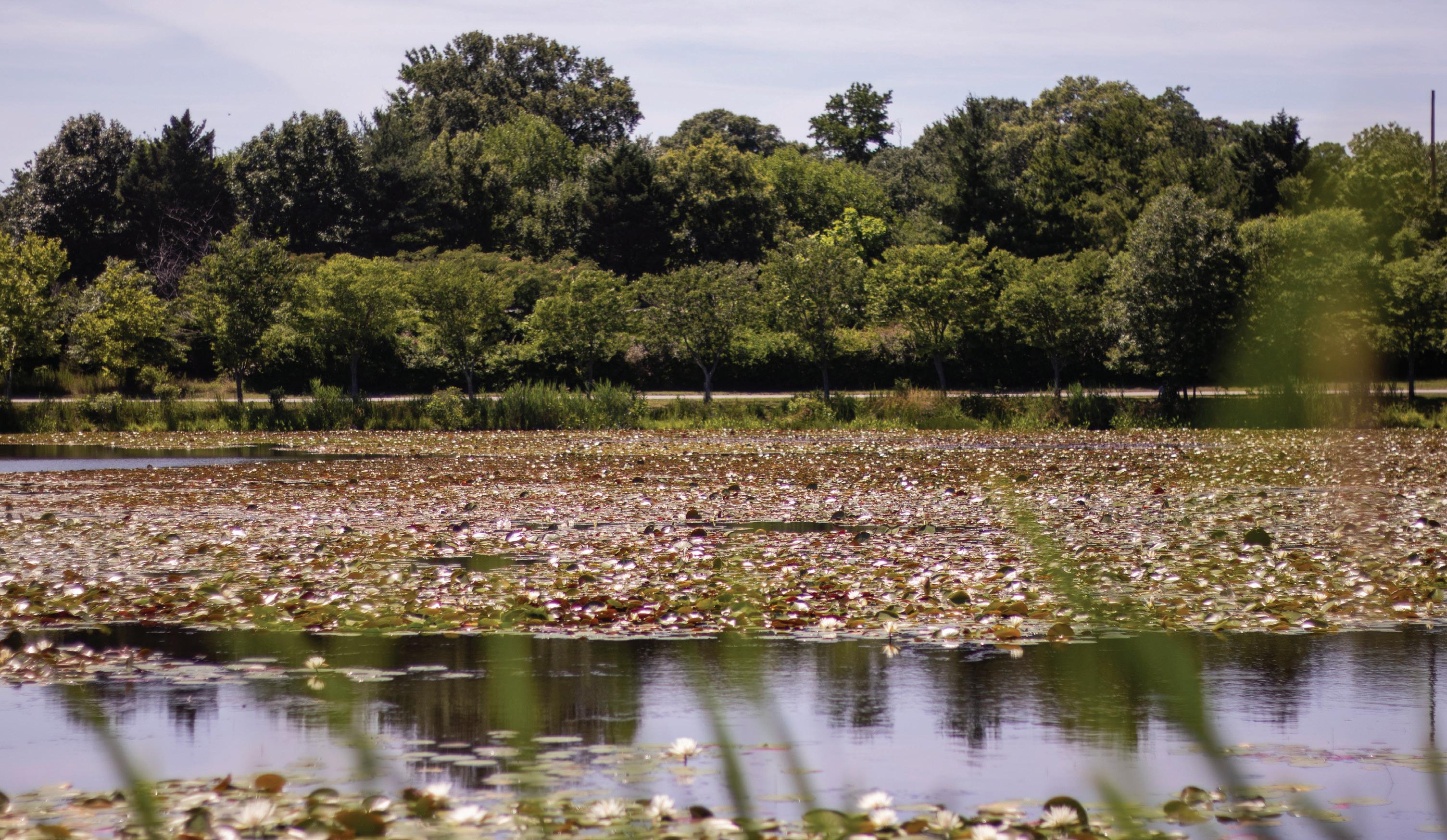
Keen to capitalize on opportunities, three organizations came to operate aquaculture enterprises in Lakeland: Newman’s Aquarium Fisheries was joined by the parallel operations of Henry Bishop, Inc. and the U.S. Department of Commerce, Bureau of Fisheries. Each operation used special containers that they loaded onto trains to transport their live products. Railroad records even show a fish house just next to the lake.
By 1906, Newman’s Aquarium Fisheries business was going swimmingly, so much so that he held tours for visitors to Lakeland, including Maharaja Sayajirao Gaekwar of Baroda, the progressive leader of an Indian state. His Highness was a world traveler who sought out innovation and replicated many cuttingedge inventions back at home. Gaekwar was so impressed by the fishery that he spoke of building one of his own. (On the day of his tour with Newman, he also visited the Maryland Agricultural College, which we now know as the University of Maryland.)
While Newman was raising fish in the ponds, pioneering work was taking place just yards away, at the Army Signal Corps Aviation School located at the College Park Airport. Wilber Wright was training early military flyers, and aerial photography and air mail were both taking off. And at least one plane made an unplanned landing in one of the ponds —
indeed, records document one such instance on a windy day in 1919. Speaking of things falling from the heavens, would you believe a 1895 Washington Star report of a meteor landing in that same lake?
Newman eventually folded his goldfish business, and the federal government then stepped
Ifirst became interested in local journalism when I moved to Hyattsville, in 2011, and discovered the Hyattsville Life & Times. As I read the city's homegrown newspaper cover to cover each month, I realized I prefered independent journalism to syndicated news. The Life & Times brought me stories about people I was meeting, places I was discovering and issues that directly affected my family.
And while technology brings news to our fingertips faster than ever before, community is what connects us. Community journalism brings me the kind of news I care about the most.
When I moved to College Park, in
2018, I missed having a newspaper that brought the city to my doorstep every month. Then, in March 2020, I got wind of a newspaper in the works for the city — a paper planned by Streetcar Suburbs Publishing, the same nonprofit that delivers up the Hyattsville Life & Times. I reached out to Chris Currie, who sat on Streetcar’s board, and the rest is history.


The College Park Here & Now celebrated its second anniversary in May.
Currie’s dedication to the newspapers knew no bounds. He helped sustain the Hyattsville Life & Times for the 15 years he served on Streetcar’s board and was instrumental in bringing the Here & Now to College Park — he even sold ads without
LAKE FROM PAGE 13
commission to get us through our first 18 months. Currie stepped down from the board in May.
Before departing, Currie tasked himself with doing the hard work to launch a third print newspaper, The Laurel Independent, under the Streetcar umbrella. As of this month, Laurel residents are receiving their inaugural edition of the paper, published under the experienced eye of veteran journalist Katie Jones. And like the Hyattsville Life & Times and the College Park Here & Now, The Laurel Independent will strive to serve up news that city residents likely won’t see anywhere else. And how fitting for this new newspaper to land where it has: Streetcar Suburbs
in and stocked the lakes with black bass, crappie and catfish —about 130 fish, total. When the lakes were drained six months later, researchers counted more than 74,000 fish; this astonishing headcount prompted Newman to lease the site to the Department of Commerce, though he did push for a full sale instead. The government drew up ambitious plans for the fishery, with ponds extending from the site of the current lake all the way to Baltimore Avenue. Department of Commerce Secretary (and future president) Herbert Hoover inspected the fishery in 1924, but legislation authorizing the purchase failed, and the proposal for
Publishing is named for the old line that ran from the District out to Laurel.
Not only is The Independent launching this month, but the Life & Times and your own Here & Now were awarded first and second place in the National Newspaper Association’s Better Newspaper Contest. Yes, the nation’s top two local newspapers (according to the NNA) sit side by side, and for free, at Whole Foods.
Currie was a staunch advocate for local journalism, and he worked tirelessly to deliver community news to our doorsteps. And with the launch of The Laurel Independent, his legacy lives on.
additional lakes was off the table. By 1937, the fish platforms along the railroad had been retired, and the fisheries were likely closed. The main lake had become a quiet place where children played and fished, and skated in the winter. Arthur Dock, a member of Lakeland High School’s class of 1950, the school’s last graduating class, remembered bringing “the image of the lake into the room” for their prom. Students gathered honeysuckle and placed tubs of floating waterlilies in the hall. “It was so beautiful and smelled so good,” he recalled.
The lake, along with the community around it, became part of College Park when the city incorporated, in 1945. In reporting the event, the Greenbelt Cooperator (later renamed Greenbelt News

You will be compensated for your time!
Who? Persons 18 - 30 years old with normal hearing
Persons 65 – 85 years old with either normal or mildly impaired hearing
American English must be your first language
Where? University of Maryland, College Park, MD
What does the research involve? You may be asked to listen to sentences, tones, or noise bursts. You will then be asked to react to a particular sound or sentence. This will take approximately 18 to 25 hours, scheduled over multiple weeks
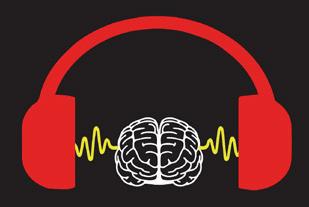
Or you may be asked to complete tasks that involve passively measuring brain activity This will take approximately 2.5 to 4.5 hours.
For further details, contact Ms. Carol Gorham hearing@umd.edu, 301-405-4236
Review) reported that “Lakeland voted overwhelmingly against the merger: 173 against to 9 for, and it is rumored that certain persons spread an impression throughout the colored community that the University of Maryland under the incorporation, planned to take from Lakeland its lakefront property.”
By the 1970s, the lake’s neighborhood was a quiet, semi-rural spot with homes and an old school building which had been repurposed as a church, and skeletons of buildings were all that remained of Newman’s fishery. The City of College Park purchased the lake and surrounding community as part of an urban renewal program. Residents were forced to move, and the community was leveled — only the lake remained. Redevelopment plans were not realized and the land was left fallow. Until it was discovered by WMATA.
With a great deal of pride, WMATA and local officials set out to create the Lake Artemesia we know today. A piece in The Washington Post described the lot where the lake is now located as “a 38-acre undeveloped area,” the large pit resulting from excavations in the 1980s for Metro’s Green Line. This mirrored the process nearly a hundred years earlier when Lake Artemesia was first established. The reinvented lake and trails now occupy land where homes and the community’s first school used to be.
The Lake Artemesia Natural Area is now under the auspices of the Maryland-National Capital Park and Planning Commission. As you explore the park’s trails and enjoy the lovely vistas, pause to remember the lake’s long and complicated history and consider, too, the people who once lived, worked and played in this community.






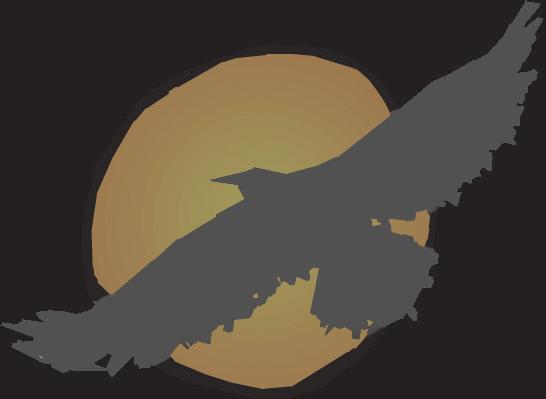
Calvin Hawkins is a dedicated servant leader committed to supporting progressive initiatives for working families, our youth and the environment... engaging and standing up for all people of Prince George’s County.

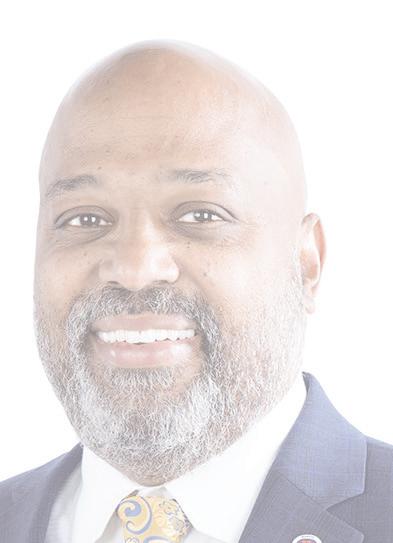
R Elected Council Chair two consecutive years R Led efforts to build six new schools through a Public-Private Partnership (first of its kind in the nation) R Advanced integration of healthcare policies and wellness initiatives R Increased funding for the Youth Service Bureaus R Supported multi-generational recreational facilities
R Addressing climate change and flooding throughout the county
“Mr. Hawkins has spent years in Prince George’s Government…. Tireless and compassionate, he is committed to public service for the right reasons – namely, to help people.


As an attorney, I prosecuted child abuse and neglect cases. In the House of Delegates, I passed more bills than any other member , ensuring increased funding for youth mental health services, fighting foreclosures and blight in our communities and holding corporations accountable for overcharging seniors. I am the ONLY candidate on the ballot that has professional experience working with all levels of government.
We are living in unprecedented times and facing threats like never before. It’s time to elect a fighter with a proven track record of delivering for the people of this district. My name says it all: I’m a Messenger, Servant, and Warrior.
This election has become very negative. Rather than relying on outside PACs running ads for me, I’m running on my solid undisputed record of service to this district. Visit AngelaForCongress.com to read testimonials and coverage of my work.



Record — not rhetoric — is what the people of this district need.
It’s time we send an Angel to Congress , especially a ghter like Angela.